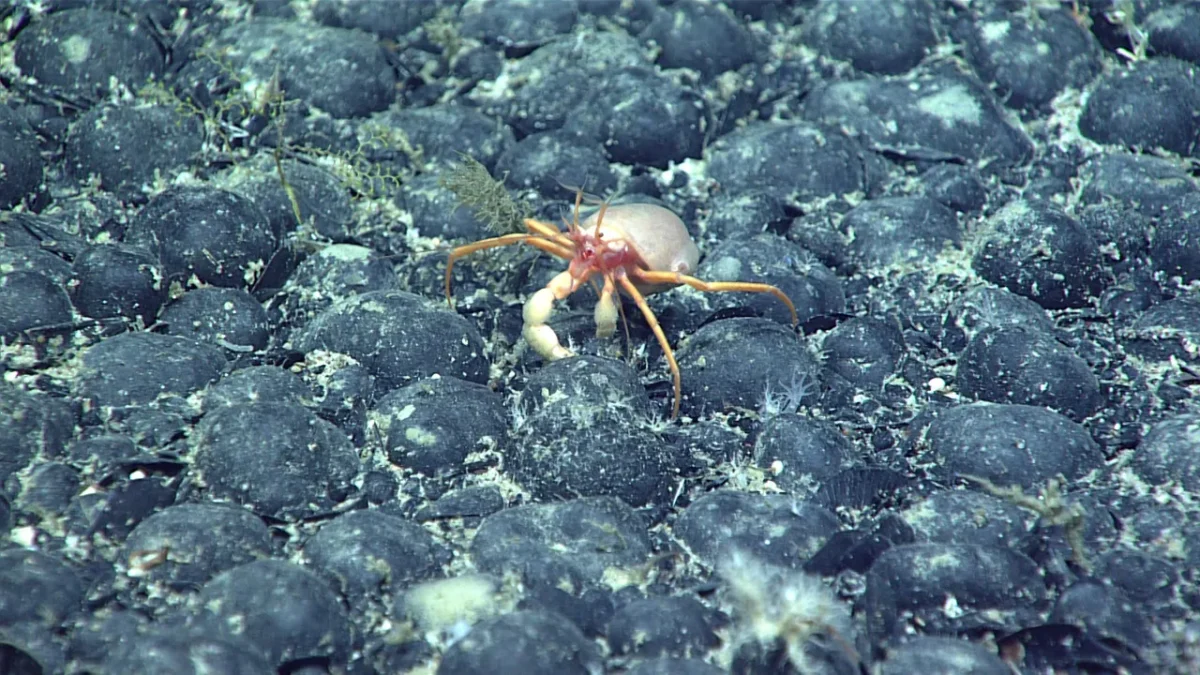“Dark Oxygen” from the Depths of the Ocean

In the dark depths of Earth’s ocean floors, a spontaneous chemical reaction is quietly producing oxygen, without the need for life. This discovery challenges the long-standing belief that photosynthesizing organisms are necessary to create the oxygen we breathe.
Biogeochemist Andrew Sweetman from the Scottish Association for Marine Science (SAMS) and his team stumbled upon this finding while measuring seafloor oxygen levels to assess the impact of deep-sea mining.
In the Pacific Ocean, black, rounded rocks are scattered across the seafloor at depths of over 4,000 meters (13,000 feet). Surprisingly, the scientists observed increasing oxygen levels in these areas.
“When we first got this data, we thought the sensors were faulty, because every study ever done in the deep sea has only seen oxygen being consumed rather than produced. We would come home and recalibrate the sensors but over the course of 10 years, these strange oxygen readings kept showing up,” explains Sweetman.
Sweetman and the team decided to test it using a different type of sensor and were amazed when it came back with the same results.
To explore the mystery, the researchers collected some of these nodule rocks in the lab to see if they were the source of this ‘dark oxygen’ production.
These nodules are natural deposits of rare-earth metals like cobalt, manganese, and nickel, mixed in a polymetallic blend. These exact metals are used in batteries, and it turns out the rocks may be acting similarly on the ocean floor.
The researchers found that single polymetallic nodules produced voltages of up to 0.95 V. When clustered together, they can easily reach the 1.5 V required to split oxygen from water in an electrolysis reaction.
“It appears that we discovered a natural ‘geobattery,'” says Northwestern University chemist Franz Geiger. “These geobatteries are the basis for a possible explanation of the ocean’s dark oxygen production.”
While there is still much to investigate, such as the scale of oxygen production by these nodules, this discovery offers a potential explanation for the persistence of ocean ‘dead zones’ long after deep-sea mining has ceased.
In 2016 and 2017, marine biologists discovered that sites mined in the 1980s still lacked even bacteria, while unmined regions flourished. The persistence of these ‘dead zones’ remains unknown, but this new discovery could be the reason for the dead zones in what would otherwise be such high faunal diversity areas.
Additionally, the discovery of ‘dark oxygen’ production raises new questions about the origins of oxygen-breathing life on Earth, which had previously been attributed to ancient microbial cyanobacteria.
“We now know that there is oxygen produced in the deep sea, where there is no light,” said Sweetman. “I think we, therefore, need to revisit questions like: Where could aerobic life have begun?”
This research was published in Nature Geoscience.